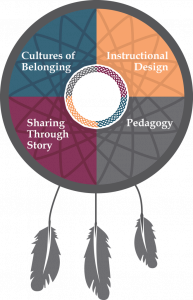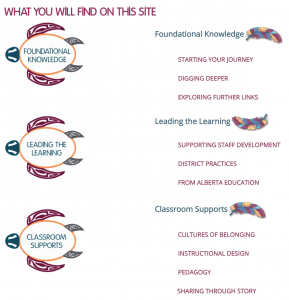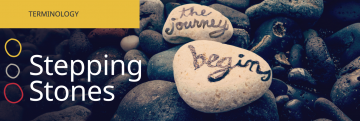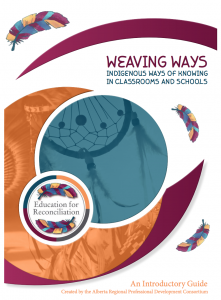Empowering the Spirit is a collection of digital resources curated to increase awareness and understanding of First Nations, Métis and Inuit histories, perspectives and ways of knowing. The collection of tools, videos and websites found within Empowering the Spirit lend support to teachers and school leaders as they endeavour to weave Indigenous knowledge systems into their current practice. In celebration of the important connectedness of learning and the natural world, and in appreciation of the Indigenous peoples who were this land’s first keepers, the turtle icon of Empowering the Spirit serves as a symbolic guide to help navigate their site. The turtle is significant in many Indigenous communities as a crucial member of the Creation story, viewed as a knowledge keeper and teacher.
First Nations, Métis and Inuit students experience greater success as engaged participants in learning that is authentic and connected to their personal values and life experiences. First Nations, Métis and Inuit students, families and communities need to feel that curricula honours their perspectives, histories, languages and cultures. The website of Empowering the Spirit provides support for all levels within school jurisdictions to increase awareness, understanding and application of First Nations, Métis and Inuit histories, perspectives and ways of knowing for the purpose of implementing treaty and residential schools education and Truth and Reconciliation Commission Calls to Action for education. Inside the website you will find 3 main sections to help through the journey: Foundational Knowledge, Leading the Learning and Classroom Supports. In the video below learn to navigate the website.
The first section, Foundational Knowledge helps start our journey, it guides understandings of concepts, terms and knowledge to shift thinking and attitudes and advance reconciliation. It also provides guidance for the implementation of the First Nation, Métis and Inuit competency. The section starts our journey by sharing terms and terminology as well as information on traditional territories, historical and contemporary contributions, treaty relationships, worldviews, residential schools and policy and legislation. By digging deeper we gather resources that are suitable for both group learning and independent study. And using further links provides us with additional resources for continued learning and the development of professional knowledge and understandings.
In the second section, Leading the Learning provides resources that support staff development, from promising practices to illustrative examples from school jurisdictions and supporting resources from Alberta Education. The section supports staff development by providing facilitator guides, professional learning supports, discussion tools and promising practices. Using district practices to get to know promising practices and resources that have been developed by school districts in Alberta. Through Alberta Education we connect to resources and supports that can further help us lead Indigenous learning. In the following video, watch how communities of practice can support educators in building Indigenous foundational knowledge and lead the learning.
 The last section, Classroom Supports builds upon ideas presented in the Weaving Ways introductory digital guide. Organized into four interrelated quadrants, or ways in which teachers can organize their thinking and approaches, Classroom Supports assists teachers in the design of meaningful teaching and learning opportunities that weave together Indigenous ways of knowing with their current pedagogical practices for the benefit of all students and our collective journey towards reconciliation. The four quadrants that comprise Weaving Ways are interconnected and invite teachers to explore Indigenous knowledge systems.
The last section, Classroom Supports builds upon ideas presented in the Weaving Ways introductory digital guide. Organized into four interrelated quadrants, or ways in which teachers can organize their thinking and approaches, Classroom Supports assists teachers in the design of meaningful teaching and learning opportunities that weave together Indigenous ways of knowing with their current pedagogical practices for the benefit of all students and our collective journey towards reconciliation. The four quadrants that comprise Weaving Ways are interconnected and invite teachers to explore Indigenous knowledge systems.
The Weaving Ways resource is an introductory guide to support teachers in considering how Indigenous knowledge systems can support a rich experience for students in their classrooms. With an invitation to teachers to be mindful of Indigenous ways of knowing within current practices, Weaving Ways guides teacher exploration of the histories, cultures, languages, contributions, perspectives, experiences and contemporary contexts of First Nations, Métis and Inuit peoples while engendering an environment of belonging for all.
Building on the ideas presented in the Weaving Ways Introductory Guide, the Weaving Ways Video Series is a three-part video series shares practical examples and insights from teachers as they share their journey to design meaningful teaching and learning opportunities that weave together Indigenous ways of knowing with their current pedagogical practices. The three video exemplars help us gather a variety of ideas that you can incorporate into your own classroom or school. The accompanying Weaving Indigenous Ways of Knowing in Classrooms and Schools Conversation Guide provides a context by which you might explore these videos for your own use, or it can be used to guide deeper conversations with a larger group of educators within a school community. Watch below the series to see how educators transform their teacher practice.


